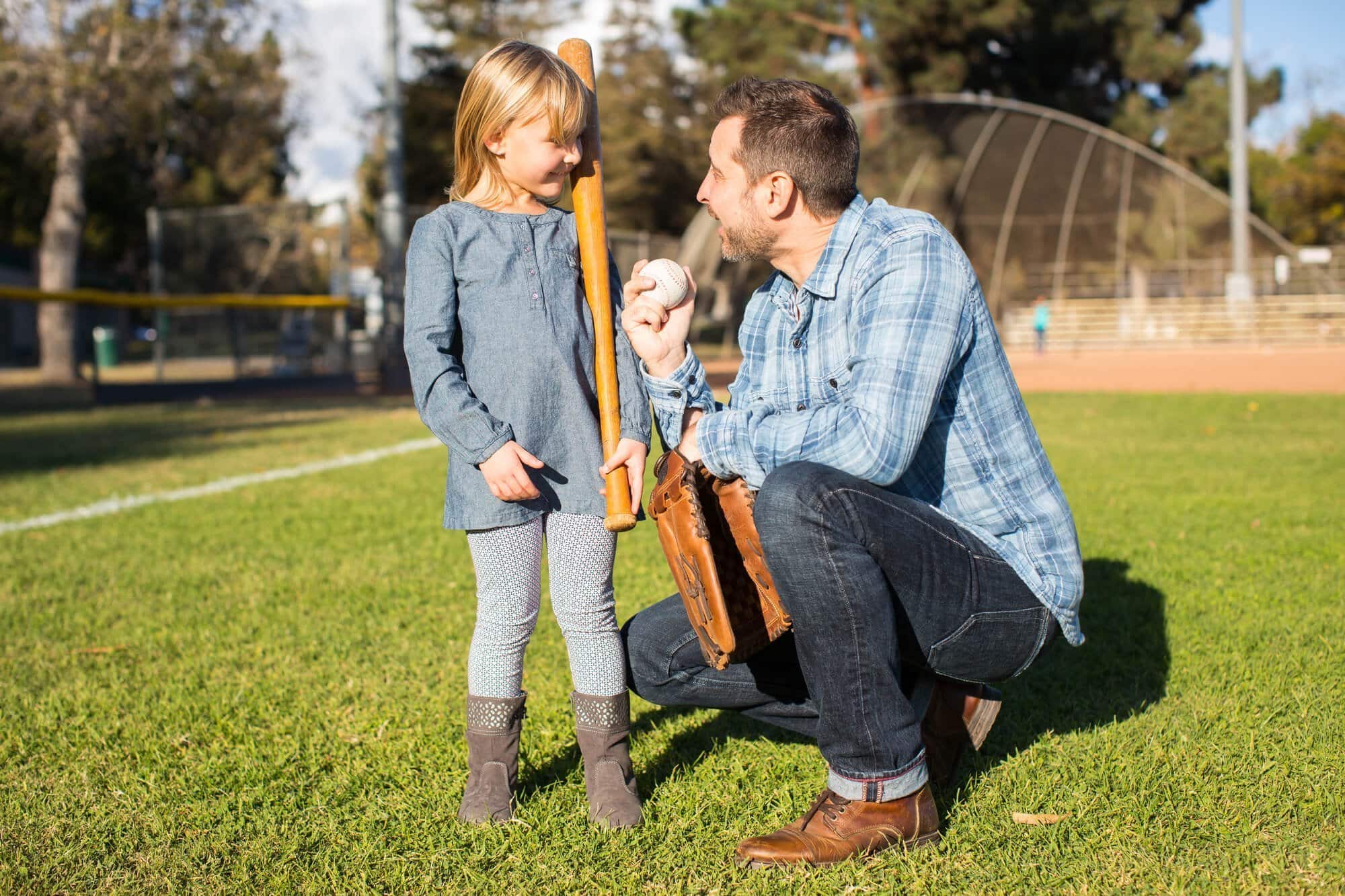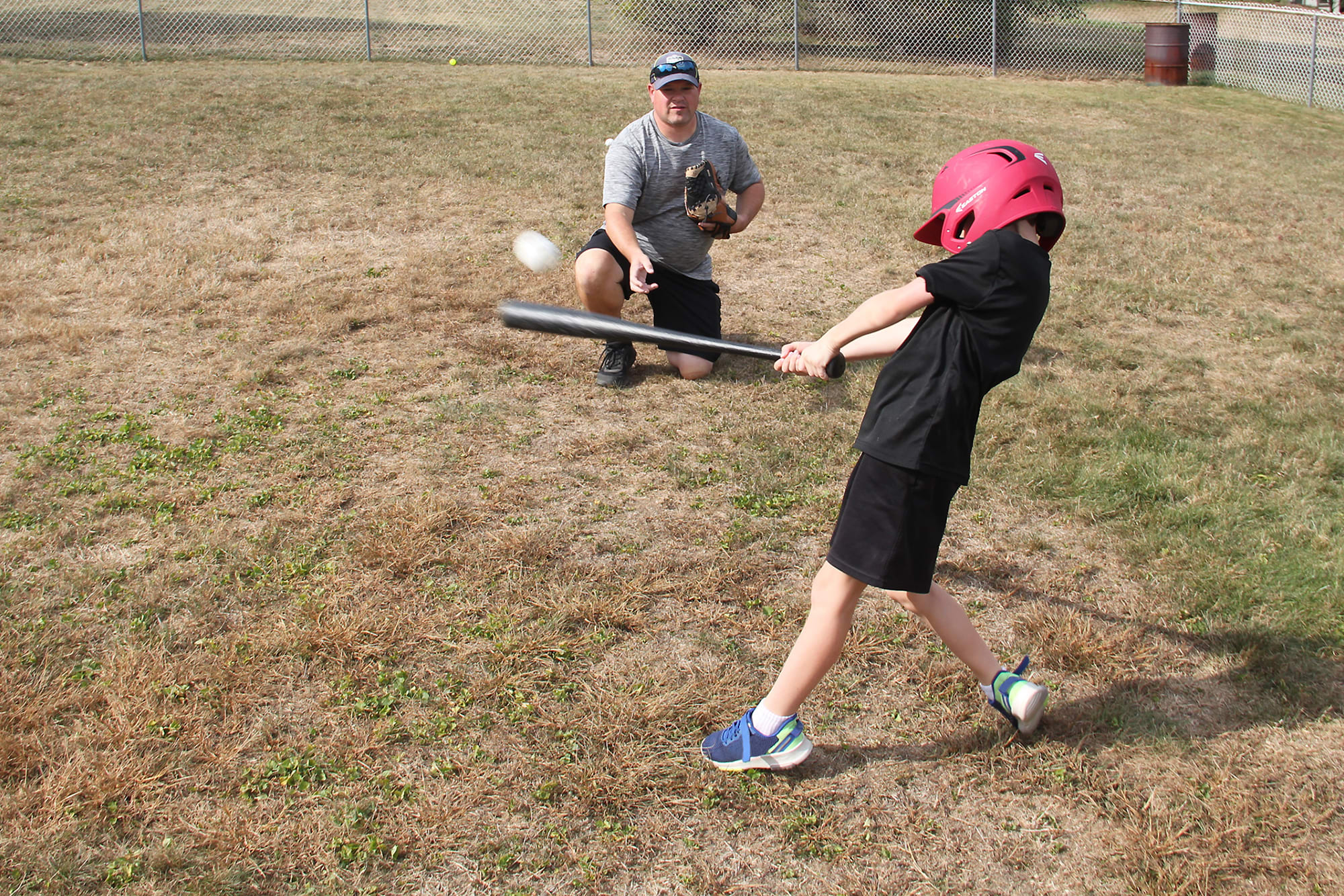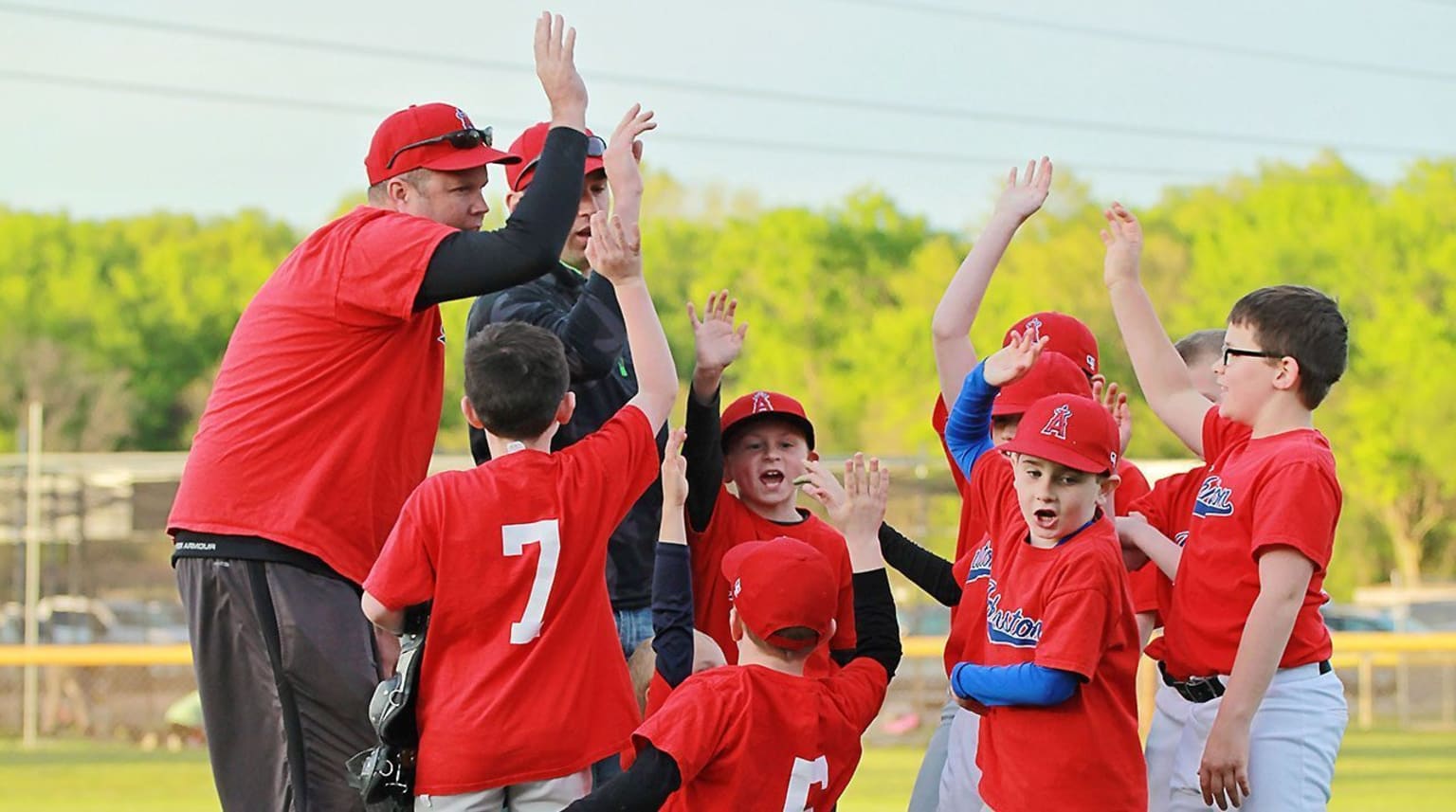Every parent and coach involved in youth baseball shares a common aim: to foster a love for the game in young players and help them improve their skills. The swing is one of the most important skills in baseball – it’s the moment when all the training pays off and the ball is hit. However, perfecting the swing is not an overnight process; it necessitates the use of proper techniques, drills, and a great deal of practice. Let’s look at some simple and effective drills that can help young hitters make better contact and gain confidence at the plate.
Quick Summary
Grasp the main elements of an effective baseball swing.
Get to know the necessary equipment for safe and efficient practice.
Find out about drills designed for various age groups and skill levels.
Receive detailed instructions for the Tee Drill, Soft Toss Drill, and Fence Drill.
Understand the significance of repetition and regular practice in enhancing hitting skills.
Back to Basics: Youth Baseball Swing Drills
Great hitters don’t just happen—they’re built through regular practice and a firm grasp of the basics. By concentrating on the fundamentals, young players can cultivate a swing that’s both strong and accurate. And the great thing about baseball is that you don’t need a field or a team to practice; many drills can be performed right in your own backyard. So pick up a bat, a couple of balls, and let’s get to work!

Understanding the Basics of a Baseball Swing
Before we delve into the drills, it’s important to grasp what constitutes a good swing. A swing can be dissected into several parts: the stance, the grip, the load, the stride, the swing path, and the follow-through. Each component must work together to form a smooth, effective baseball swing. A good swing begins with a balanced stance, a solid grip on the bat, and a concentrated gaze on the ball. From there, the batter shifts their weight onto the back leg, strides towards the ball, swings with a level path, and completes a full follow-through.
Getting Ready: Necessary Equipment and Safety Advice
Before beginning any drills, it’s crucial to prioritize player safety. Here’s what you should have:
For head protection, a batting helmet is necessary.
Both the player and the coach or pitcher who is throwing the ball during drills should have baseball gloves.
Bats that are the right size and comfortable for the player to hold and swing.
For younger or less experienced players, baseballs or softer practice balls are recommended.
Adequate space to swing a bat safely without the risk of hitting anything or anyone.
When the right equipment is available, young players can practice their swing without worry, allowing them to focus on improving their technique.
Choosing the Right Drills for Your Young Athlete
Not all drills are created equal—some are better suited for beginners, while others are designed for more advanced players. It’s essential to choose drills that match your young athlete’s current skill level to keep them challenged without getting frustrated.
Drills for Different Age Groups
Younger players, aged 5-8 years, often benefit from simple drills that focus on the basics, such as hand-eye coordination and basic swing mechanics. As players grow older and their skills develop, they can move on to more complex drills that focus on power, timing, and precision.
When and Why to Use Individual and Team Drills
Individual drills are perfect for honing in on particular parts of a player’s swing, whereas team drills can mimic game scenarios and foster team spirit. Both kinds of drills are essential in a comprehensive practice schedule. Individual drills can be performed at home with a parent or coach, while team drills are typically done during team practice sessions.
How to Make Swing Drills Work: A Step-by-Step Guide
Now, we’re getting to the good stuff—the drills that will help your little slugger perfect their swing. We’ll start with some simple drills and then gradually introduce more complex techniques.
Establishing a Strong Swing Base with the Tee Drill
The Tee Drill is a timeless favorite because it lets batters concentrate on the details of their swing without the challenge of a ball in motion. Here’s how to execute it:
Position a hitting tee at the player’s waist level.
Put a ball on the tee and have the player take their batting stance.
Urge the player to aim for a square hit on the ball, using the correct swing techniques.
Do this drill again, changing the tee’s height to practice hitting balls at various levels.
This drill aids players in improving their swing path and ensuring that they’re hitting the ball correctly. It’s a basic drill that players of all ages can revisit over and over again.

Soft Toss Drill: Improving Timing and Coordination
After players have mastered the Tee Drill, it’s time to bring in a moving ball with the Soft Toss Drill. This drill is designed to better timing and hand-eye coordination. Here are the steps:
Ensure the player is ready to hit, with a coach or partner kneeling to the side and slightly in front of them.
The coach or partner should gently toss a ball towards the hitter’s front hip.
The hitter should aim to time their swing so that they make contact with the ball as it comes across the plate.
Continue to repeat this drill, changing the speed and height of the tosses to challenge the hitter.
This drill is a quick way to improve a player’s ability to hit a ball thrown by a pitcher, making it a crucial part of any practice routine.
Maintaining a Regular Practice Routine
The most crucial aspect of practice is its regularity. Motivate the little ones to adhere to a regular practice routine. This could involve practicing their swing for a minimum of 20 minutes a day, three to four days a week. Regular practice helps build muscle memory, which is essential for achieving a fluid, effortless swing.
This is what a typical weekly training schedule might look like:
Monday: Practice the Tee Drill and Soft Toss Drill
Wednesday: Do the Fence Drill and have a live pitching practice
Friday: Recap the week’s drills and do some free swinging
Saturday or Sunday: Play a real game or simulate game conditions
Always remember, quality is always better than quantity. A focused, 20-minute session where the player is fully engaged is better than an hour of distracted, ineffective practice.
Tracking Improvements: Filming and Analyzing Performance
Since a picture is worth a thousand words, filming your players during practice can offer useful insights. Utilize a smartphone or a camera to record their swings from various perspectives. Afterwards, analyze the video together, identifying areas for growth and acknowledging improvements.
Track their hitting statistics over a period of time. Keep note of how many times they make contact with the ball, the quality of the contact, and where their hits are landing. This information will highlight both their strong points and the areas that need more attention. It also serves as a great source of motivation for young players to see their progress.
So, regular feedback is key. It lets players know that getting better takes time, and that with hard work, they can reach their goals.
Next-Level Swing Techniques
After kids have got the basics down, it’s time to move onto some next-level techniques to really improve their swing. These techniques get a little more into the weeds of hitting, like recognizing pitches, adjusting timing, and thinking strategically when they’re up to bat.
Teaching Lower Body Mechanics for Power Hitting
Power hitting isn’t just about the strength of the upper body; it’s also about the use of the lower body by a player. Instruct players to drive from their legs and rotate their hips to generate more power. Here’s a simple drill to improve lower body mechanics: for more detailed guidance, check out these baseball hitting drills for youth.
Ask the player to assume their batting stance without a bat.
Set a ball on a tee at the level of their knee.
Instead of taking a swing, instruct the player to concentrate on turning their hips and using their back leg to “kick” the tee with their back foot.
This drill underlines the significance of the lower body in the swing and can result in stronger hits.
Furthermore, young athletes can do squats and lunges to improve their lower body strength, which will help them hit the ball harder.
Improving Hand-eye Coordination for Accurate Contact
Hand-eye coordination is crucial for hitting the ball. To improve this ability, you can do the following exercise: For more detailed guidance, explore these youth baseball hitting tips.
Utilize whiffle balls or smaller training balls.
Ask the player to take their stance and concentrate on hitting these smaller targets as they are thrown.
This will push the player to really focus on the ball and enhance their ability to make accurate contact.
As players get better, they can practice hitting balls thrown at varying speeds and angles, imitating the diversity they’ll encounter in a game.
The Power of Positivity: A Coach’s Impact
As a coach or parent, your positive reinforcement can greatly affect a young player’s performance. Your faith in their skills can instill self-assurance and motivate them to continuously strive for improvement.
Always cheer for small wins, such as a drill done correctly or a better swing.
Urge players to keep their spirits up, even when they’re having a hard time.
Remind them that every successful hitter has had to put in a lot of effort to reach their level.
Keep in mind, a bit of encouragement can significantly improve a player’s mood and performance.

Encouragement and Helpful Critiques
Encouragement fosters good habits and boosts self-esteem. When critiquing, be precise about what the player did correctly and what they need to work on. For instance, “You did a great job of watching the ball! Next time, try to keep your back elbow up a bit higher during your swing.”
Providing positive and growth-oriented feedback allows players to identify their areas of improvement without feeling discouraged.
Talking to Kids in Sports: How to Have a Productive Conversation
When talking to kids in sports, it’s important to speak in a way they understand and see things from their point of view. Ask them questions that require more than a yes or no answer to get them to think about how they played. For example, you could ask “Which part of your swing felt the best today?” or “What did it feel like when you hit the ball?”
Make sure you’re not just talking at them, but also listening to them. This will help them trust you and feel like they have a say in their own progress.
Preparing Players for the Big Leagues: What Comes Next
After players have mastered their swing through drills, they can start using those skills in game situations. Practice hitting a variety of pitches and concentrate on situational hitting, such as bringing in a runner from third base with less than two outs.
Moreover, inspire the players to watch baseball games, whether it’s in person or on television. Watching how professional hitters deal with various situations can be extremely informative.
Putting Skills into Play
Try to recreate game situations during practice. For instance, create a situation where there are runners on base and the player has to hit the ball to a certain area of the field. This type of situational practice makes the drills more fun and useful.
Furthermore, it’s important to foster a hitter’s mindset in players even when they’re not up to bat. Encourage them to visualize successful at-bats, picturing the pitch they want to hit and their bat making contact with the ball. This kind of visualization can be a potent tool for success.
Start Hitting Like a Pro
Parents and coaches who want to help their players improve their hitting should check out the Complete Hitter’s Starter Program. This online program covers all aspects of hitting, from power to precision, and is appropriate for players of all ages.
35 hours of tutorial videos
21 different batting drills
15 customizable baseball exercises
10 tips for unlocking powerful home run potential
With a 60-day money-back guarantee, there’s no reason not to give it a shot. So what are you waiting for? Sign up today and help your players start batting like the pros!
Turning young baseball players into self-assured and talented hitters isn’t a quick process. It takes commitment, patience, and the right coaching techniques. As a coach or parent, your job is to help these young athletes reach their full potential on the baseball field. By using a range of drills and creating a supportive atmosphere, you can help players improve their swing technique, make better contact with the ball, and grow their passion for baseball.
Now that you have these drills and techniques at your disposal, you can help young hitters to flourish. It’s important to remember that the best way to improve is through regular, concentrated practice. Urge your team to commit to consistent training, to stay positive, and to always be open to learning and improving. The journey to becoming an excellent hitter is not easy, but with your help and their dedication, your team can achieve great things and create unforgettable moments on the field.
Join the Complete Hitter’s Starter Program
If you’re serious about improving your team’s batting skills, the Complete Hitter’s Starter Program is an essential tool. This online training program provides a wealth of information, drills, and techniques to help young hitters reach their full potential. By signing up, you’ll get access to a full suite of tools to help your players develop the power, precision, and timing they need to succeed at the plate.
Commonly Asked Questions
What is the ideal age to begin baseball swing drills?
The ideal age to begin baseball swing drills is as soon as a child shows interest in the sport, usually around 5 to 6 years old. At this age, prioritize enjoyable, simple drills that encourage hand-eye coordination and a passion for the game. As they mature and their motor skills improve, you can introduce more intricate drills to improve their technique.
How frequently should my kid do these baseball swing drills?
Your kid should do baseball swing drills a few times a week, trying for at least 20-30 minutes each time. Consistency is crucial for building muscle memory and getting better at the skill. However, it’s also crucial to balance practice with rest to avoid burnout and overuse injuries.
Are these drills suitable for home practice?
Absolutely, a lot of baseball swing drills can be performed at home with little to no equipment. Drills such as the Tee Drill, Soft Toss Drill, and Fence Drill are ideal for practicing in your backyard. Just ensure there’s ample room to swing safely and that players are equipped with the right gear, like helmets and gloves.
What should I look for to see if my child is improving?
If your child is getting better at hitting, you might notice that they’re swinging the bat faster, have more control over the bat, are hitting the ball more consistently, and can hit the ball to different parts of the field. You might also see that they’re more confident and excited during practice and games.
How can I make sure my kid stays excited about practice?
Help your kid stay excited about practice by setting goals they can reach, giving them positive feedback, and making practice enjoyable. Celebrate their wins, no matter how small, and help them see that mistakes are just a part of getting better.
Change up the drills and challenges to keep things fresh. And don’t forget to listen to what your kid has to say and include what they’re interested in during practice. For more ideas, check out these youth baseball batting practice drills that can make training more effective and enjoyable.
Can drills be used to improve swing speed?
Indeed, drills can be used to enhance swing speed. For example, the Bat Speed Drill encourages players to swing the bat as rapidly as they can for a specific number of repetitions. Utilizing bats that are either too light or too heavy can also aid in the development of swing speed.
How can I tell if my kid is doing the drills right?
Make sure your kid is doing the drills right by watching their technique and giving them feedback right away. You can also video their swings to watch together and compare their form to how-to videos or pro players.
It can also be useful for a skilled coach to regularly check in and correct any issues with their swing mechanics.
What should we concentrate on after getting a handle on the basic swing drills?
Once the basic swing drills have been mastered, it’s time to move on to more advanced techniques like recognizing pitches, hitting in certain situations, and preparing mentally. Begin to introduce drills that simulate game situations and inspire players to study the tactics of successful hitters.
Moreover, you might want to sign your players up for high-level training programs, such as the Complete Hitter’s Starter Program, to boost their abilities and understanding of the game.
Leave a Reply